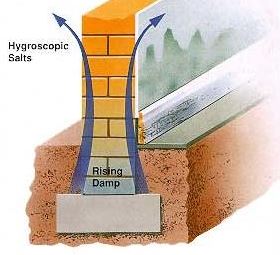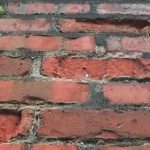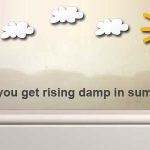The DIY Fix is reader supported. When you buy after clicking a link on our site, we may earn an affiliate commission.
Out of all the various types of damp that can affect properties, as well as all the different treatments that can be used as solutions to the problems it causes, one issue stands out and is by far the most talked about. It’s also the most confusing and the most controversial, the type of damp I am referring to is rising damp. In fact, some might say (and have said) that there is even a rising damp myth.
Indeed, people have gone further than just saying that rising damp is a myth, they’ve even written books about it. In 2010, Jeff Howell, a bricklayer by trade with 15 years’ experience in the construction industry who then moved into university lecturing on construction technology, published a book titled exactly that: ‘The Rising Damp Myth‘.
In the book (in a nutshell) he claimed that the rising damp myth is that rising damp doesn’t exist – it’s just something that has been carefully manufactured by various stakeholders in the property and damp proofing industry.
Soon after Howell’s book, which unsurprisingly ruffled a few feathers in the industry, other experts made similar claims in the media. One such person was Stephen Boniface, former chairman of the construction section of the Royal Institution of Chartered Surveyors (RICS).
These were bold claims – made by professionals with a good deal of credibility.
But not everybody agreed.
Rising Damp Myth Opinions
If you were to Google ‘rising damp myth’ or ‘is rising damp real?’ or something similar you would be faced with masses of comment, opinion, argument and counter-argument on the topic.
For every claim, you’ll find a counter-claim. Trying to wade through it all to get to the facts and to establish the truth is all quite difficult. There are even those that criticise ‘The Rising Damp Myth’ and say the claims were nothing more than a way to sell lots of books and cynical career move. After all, Jeff Howell is no longer a bricklayer or a lecturer. Instead he is now an established ‘author and columnist’ with his own successful website.
So, what is the truth?
Well, Howell’s argument and version of events is this, he says that rising damp only came to prominence in the 1960s when companies began marketing damp proof products – seems plausible enough. He argues that Chartered Surveyors routinely diagnose rising damp through the misuse of moisture meters. It’s then no surprise that mortgage lenders will insist on a professional damp survey being carried out on the property. If the ‘specialists’ that investigate the issue are damp-proofers themselves, it’s in their interests to confirm a problem because they will get paid more for carrying out the remedial work.
It’s not rocket science really. From chartered surveyors to lenders to damp proofers, each link in that chain are essentially protecting their own interests. The person left piggy in the middle and between a rock and a hard place is the client (usually the homebuyer) who has to foot the bill.
Rising Damp – The Truth?
So, have we been victims of an elaborate con for all these years with this rising damp myth?
Well, it is true to say that there are unscrupulous companies that will diagnose rising damp and recommend expensive treatments as a result. That’s why the best advice is to seek advice from an independent damp surveyor.
But this doesn’t mean that rising damp doesn’t actually exist. There is plenty of scientific and academic research that shows that rising damp is real. It does exist.
So, in short – Rising damp is real. It has been scientifically proven. But, it is rare.
You will find many examples of properties that have had rising damp accurately diagnosed and effectively treated by something like an injectable damp proof course.
One way of looking at the rising damp myth is to say that the real myth is that rising damp is a myth in the first place! But, after all, that’s just an opinion!





